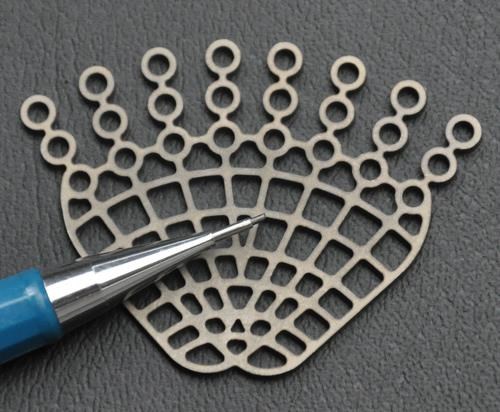Waterjet, Laser, or EDM... or Another Option?
The pros and cons of each process have been covered before, but at least one supplier’s technology bucks the trend.
Share






Micro Waterjet systems are designed specifically for small, intricate work.
For the most part, it’s perfectly okay to make broad generalizations about technology. Milling is faster than EDM; shrink-fit holders offer better runout than collet chucks; a spindle not turning is a spindle not making money. A set of widely held assumptions can provide a common foundation that enables talking about—and also writing about—complex topics without getting too bogged down in details. Nonetheless, it’s important to recognize that generalized statements and assumptions are just that: generalized statements and assumptions. As the saying goes, every rule has an exception.
One such exception was detailed in this white paper. It provides a basic overview of some of the most commonly cited pros and cons of three competing (and often complementary) technologies that are often employed for intricate work: laser cutting, wire EDM and waterjet. Most of the information wasn’t all that surprising to me. After all, MMS has covered the interplay of these technologies before. However, a significant portion of the white paper was focused on a particular subset of one of these technologies, a version of waterjet cutting that doesn’t share some of the most commonly cited limitations of that process.
At least, not according to the author of the paper, which specializes in this technology. Micro Waterjet LLC’s machines cut with an accuracy of ±0.01 mm and positioning accuracy of ±0.003 mm. Such capability belies the notion that waterjet’s relatively thick, abrasive infused cutting streams limit precision and the ability to cut delicate materials compared to EDM or laser.
MMS first covered this development back in 2010, prior to its introduction at the International Manufacturing Technology Show (IMTS) that year. Other manufacturers have also been pursuing applications of waterjet for smaller work (and it wouldn’t surprise me to discover some innovation in laser cutting or EDM that doesn’t jibe with the accepted wisdom either). In any case, whether due to broader technology advancements or a product that’s truly different, it’s important to check your assumptions and truly research any potential process changes, however confident you are in your knowledge and experience.
Have you employed any technology or processes that offer more capability than generally accepted wisdom might suggest? If so, I’d love to hear about it in the comments below.























.png;maxWidth=300;quality=90)
.png;maxWidth=970;quality=90)